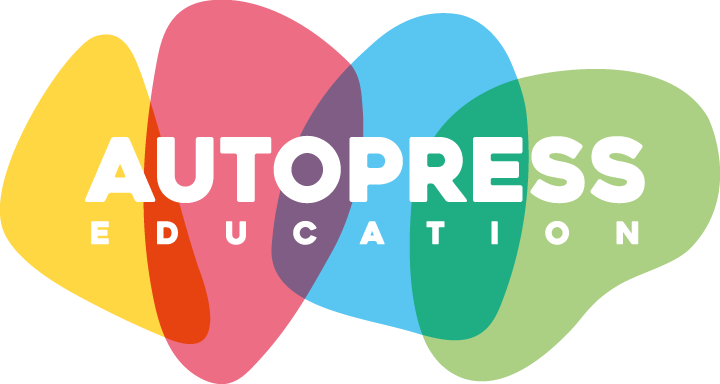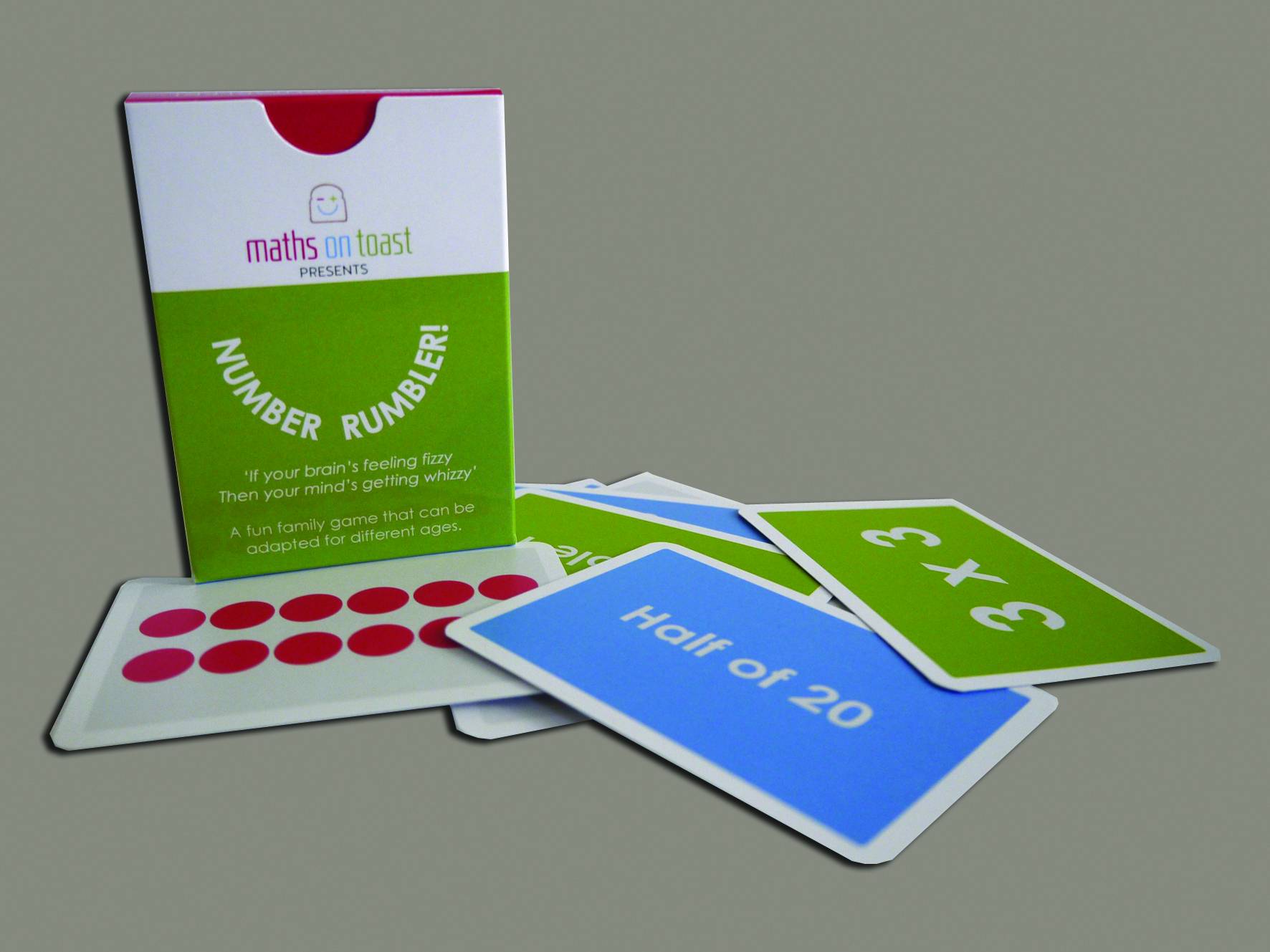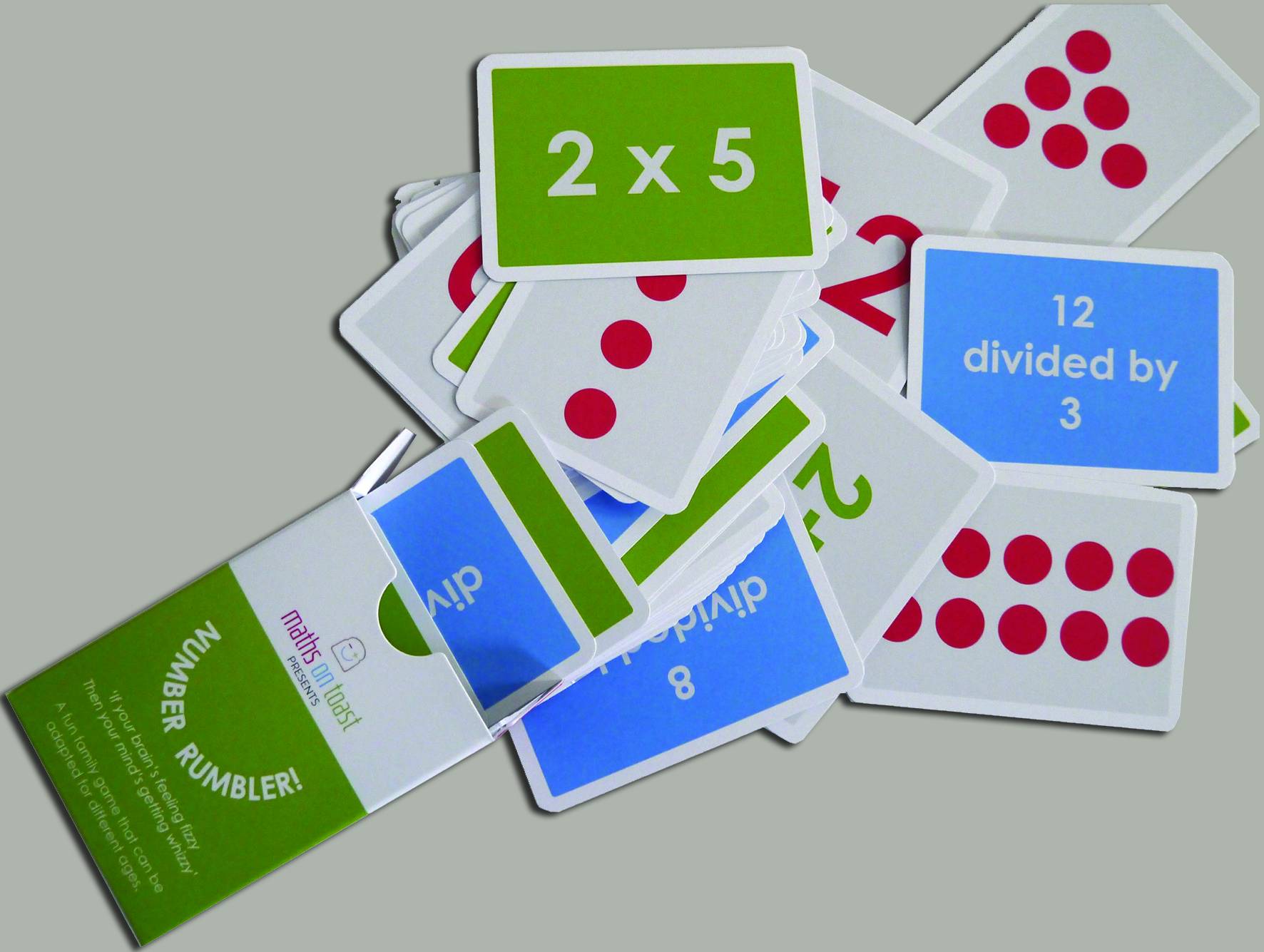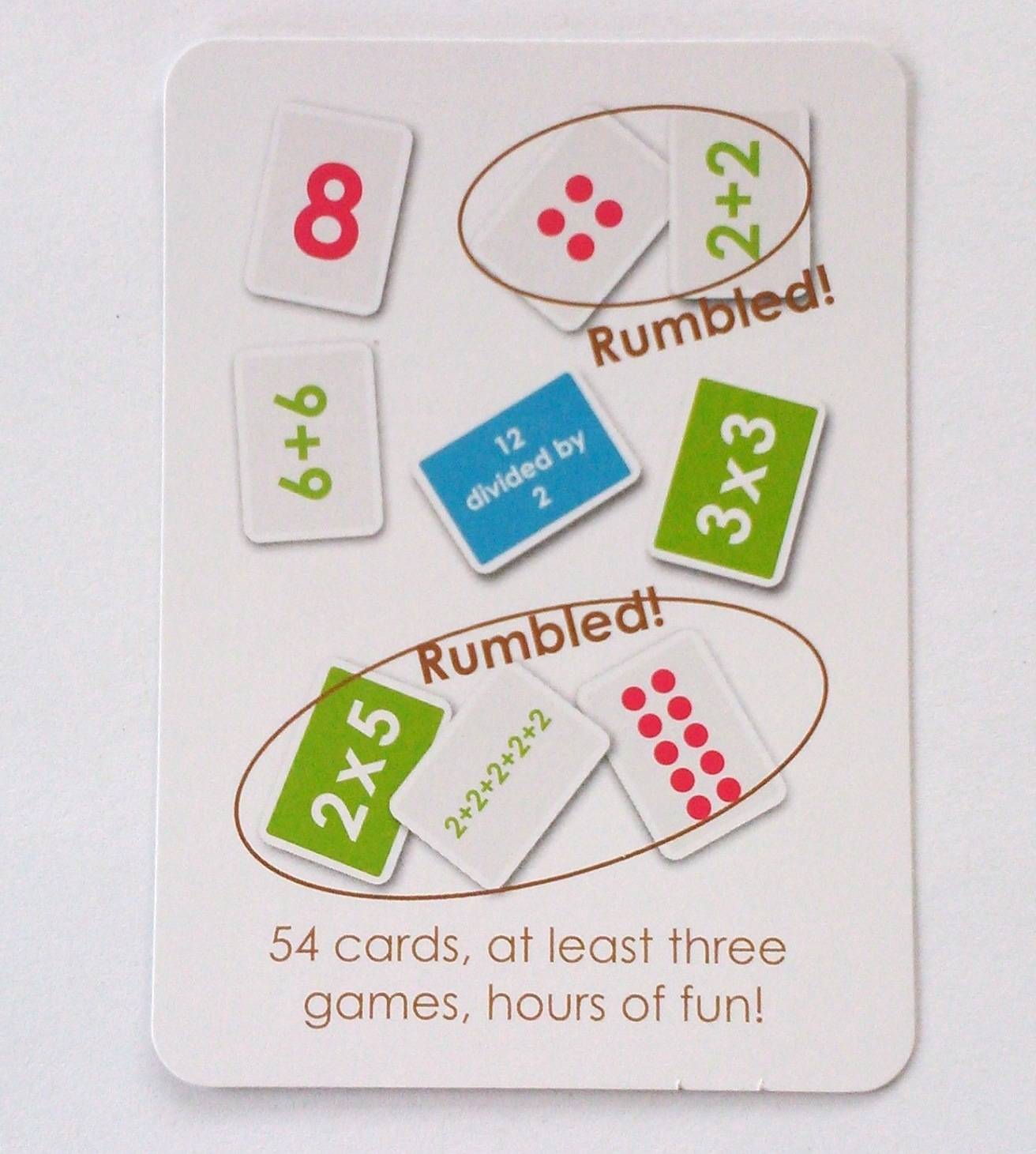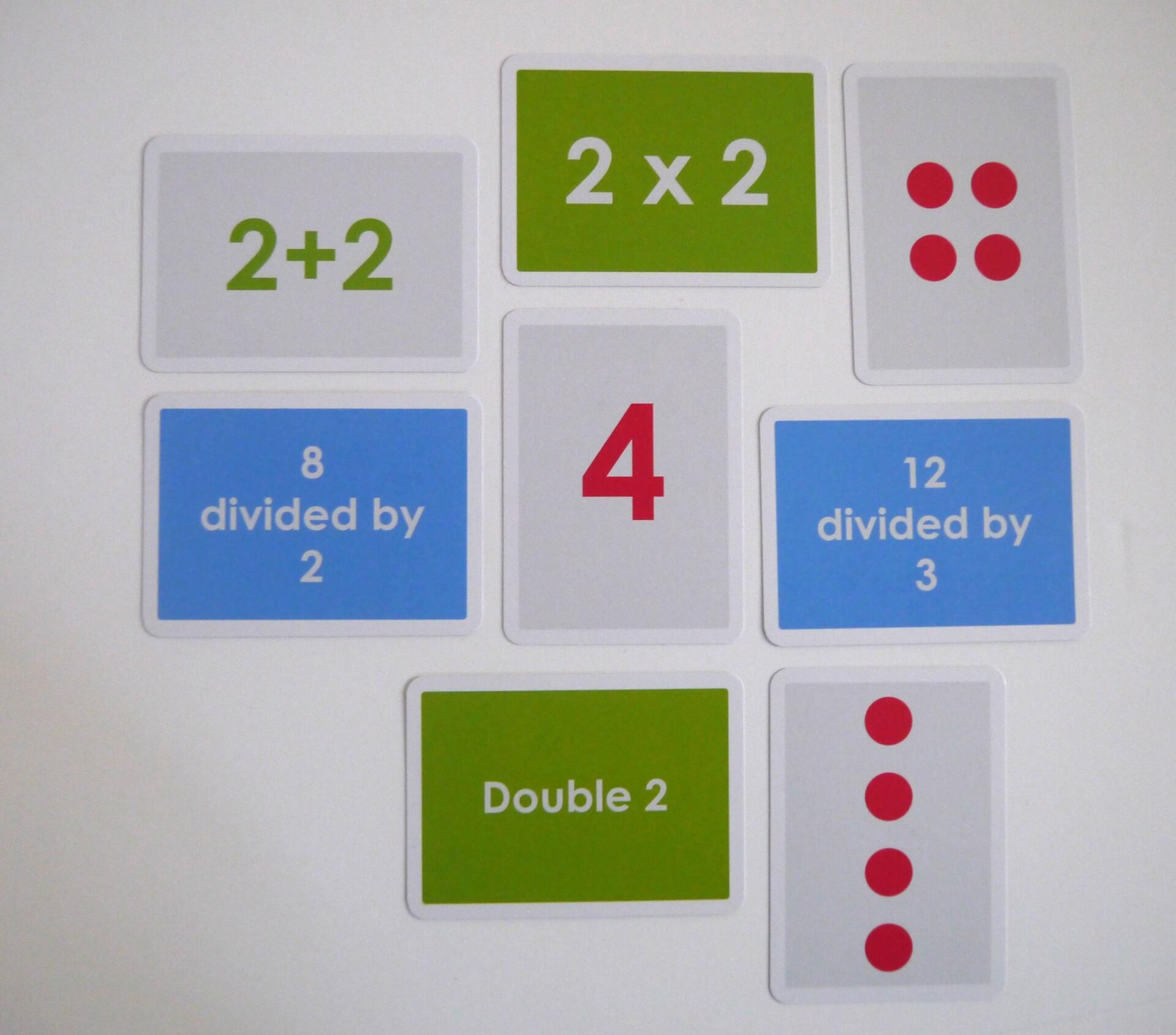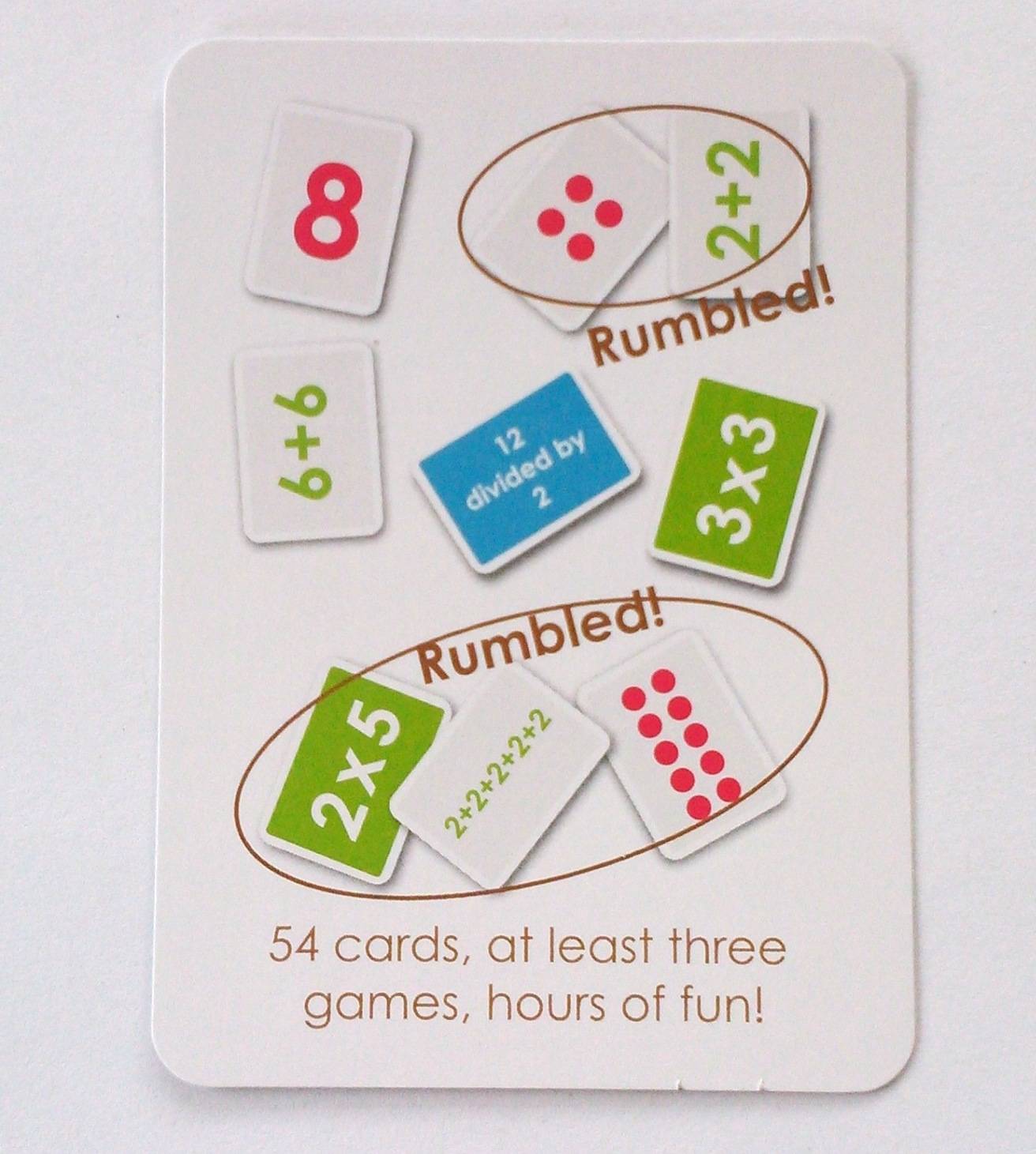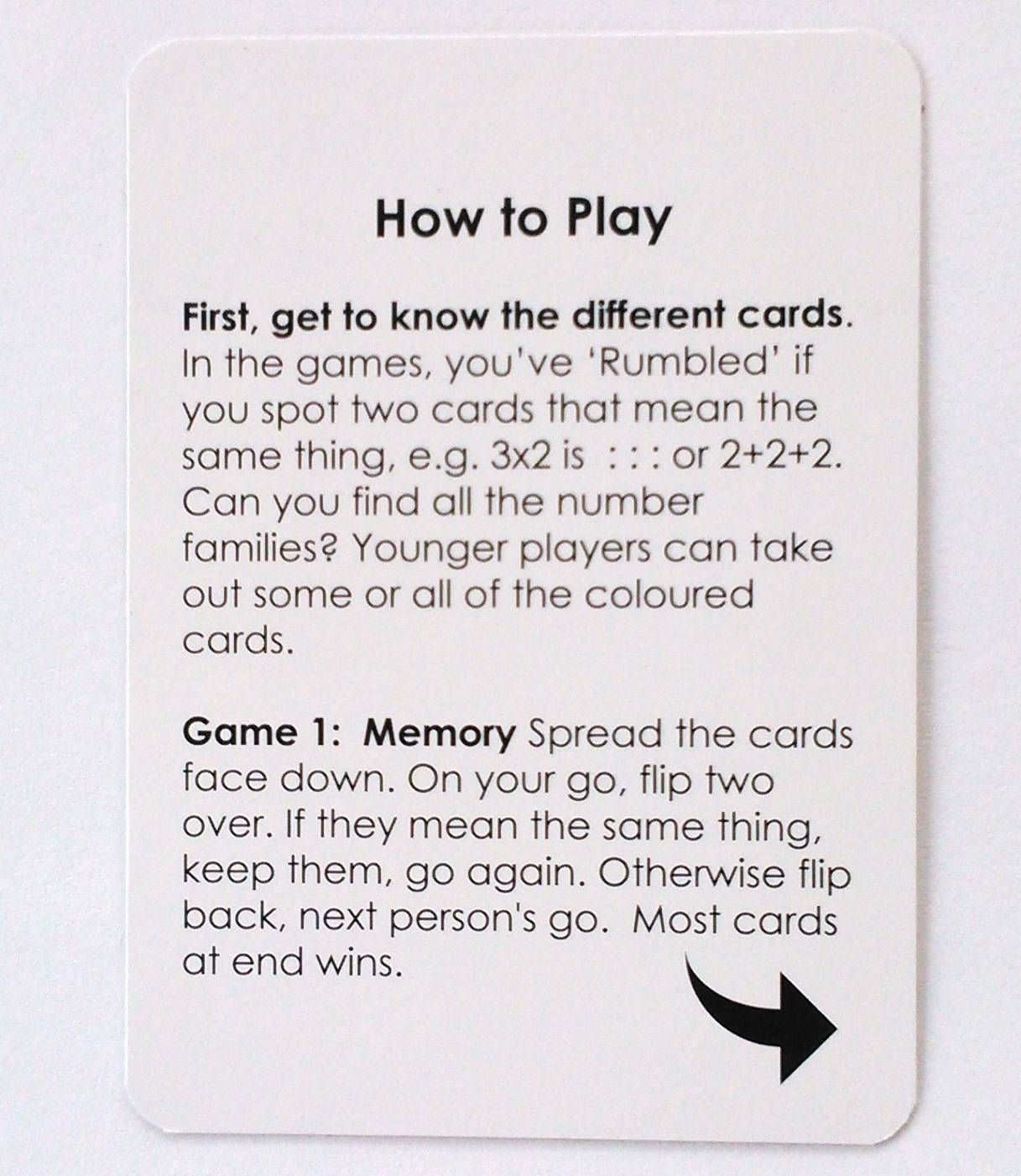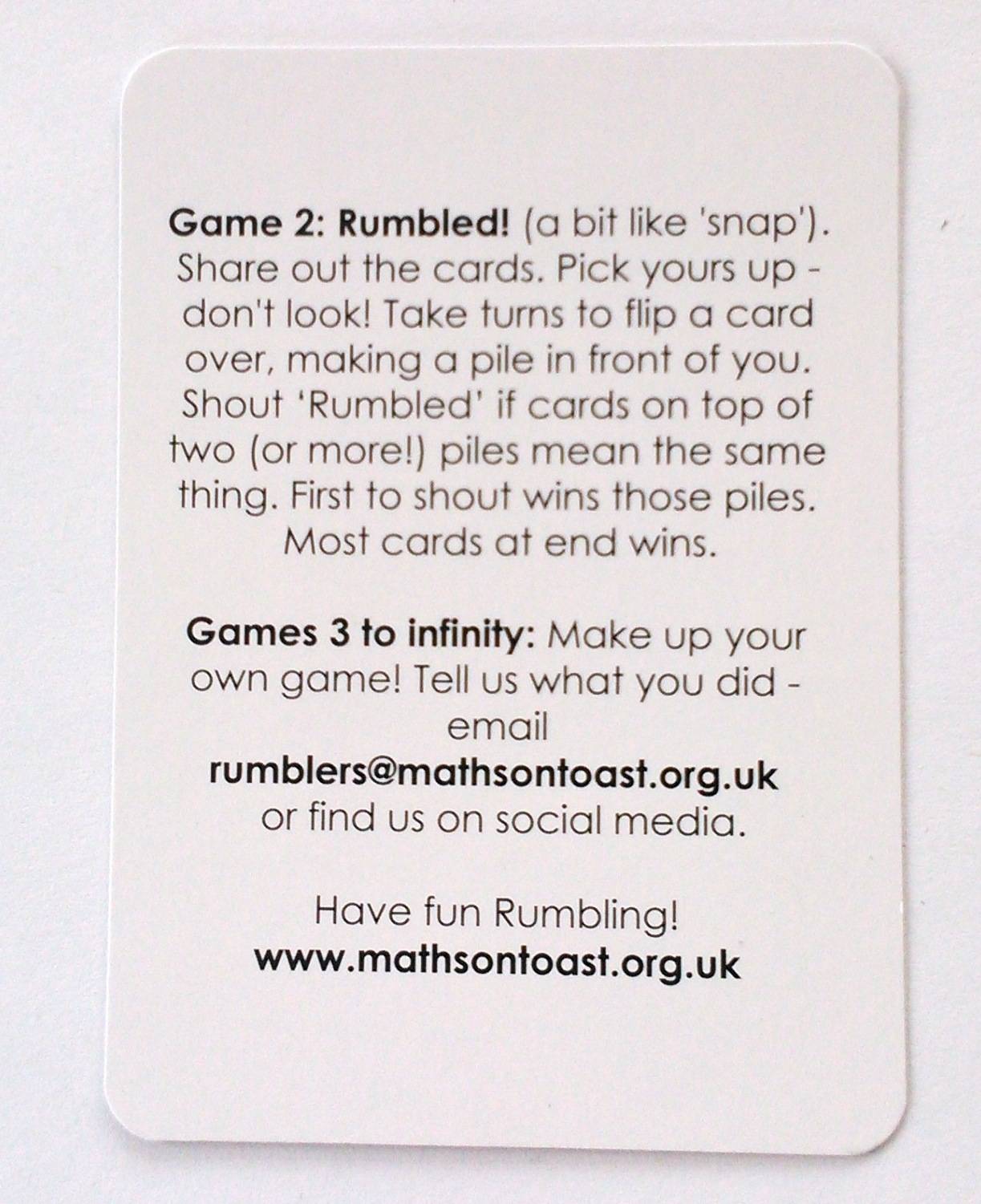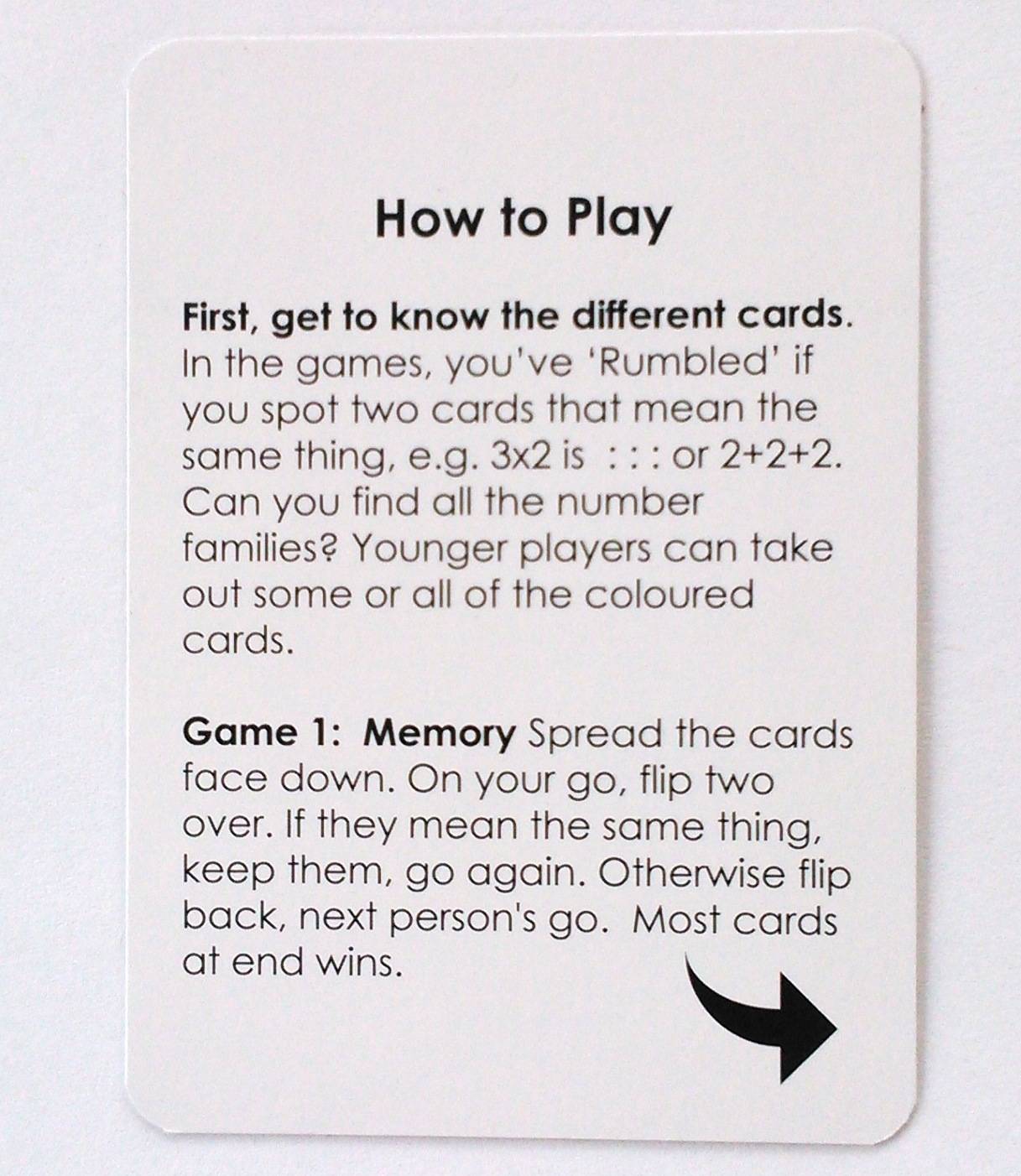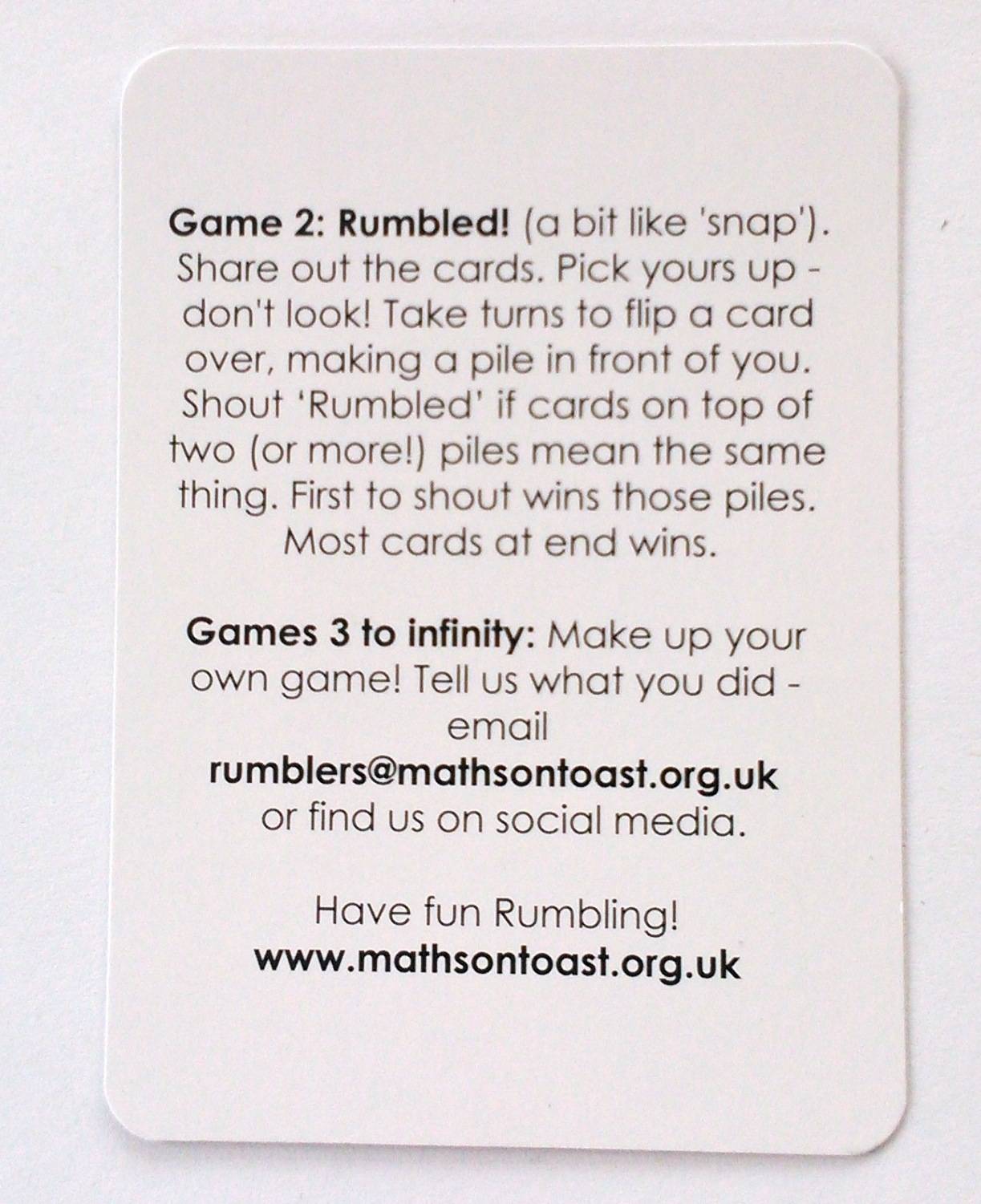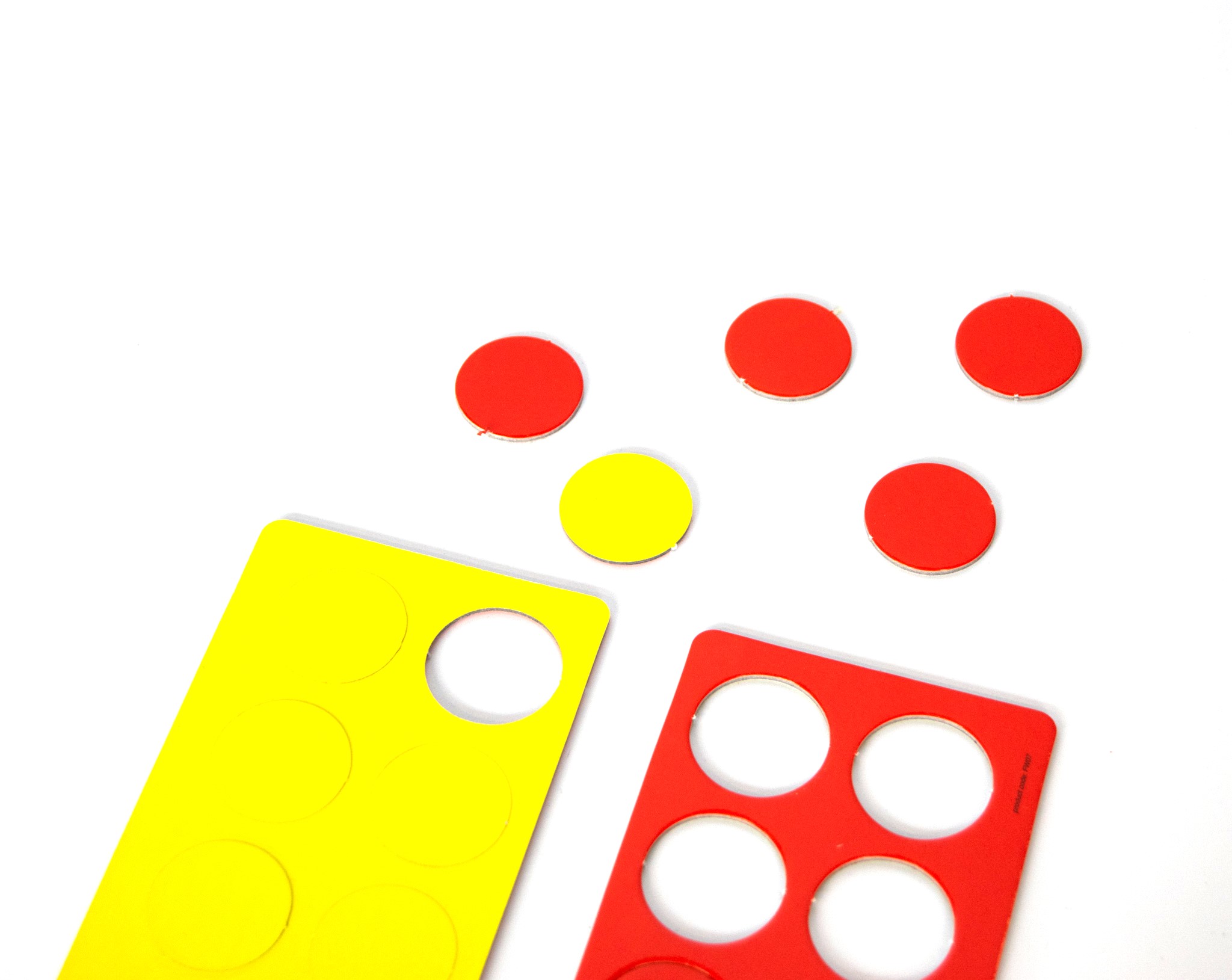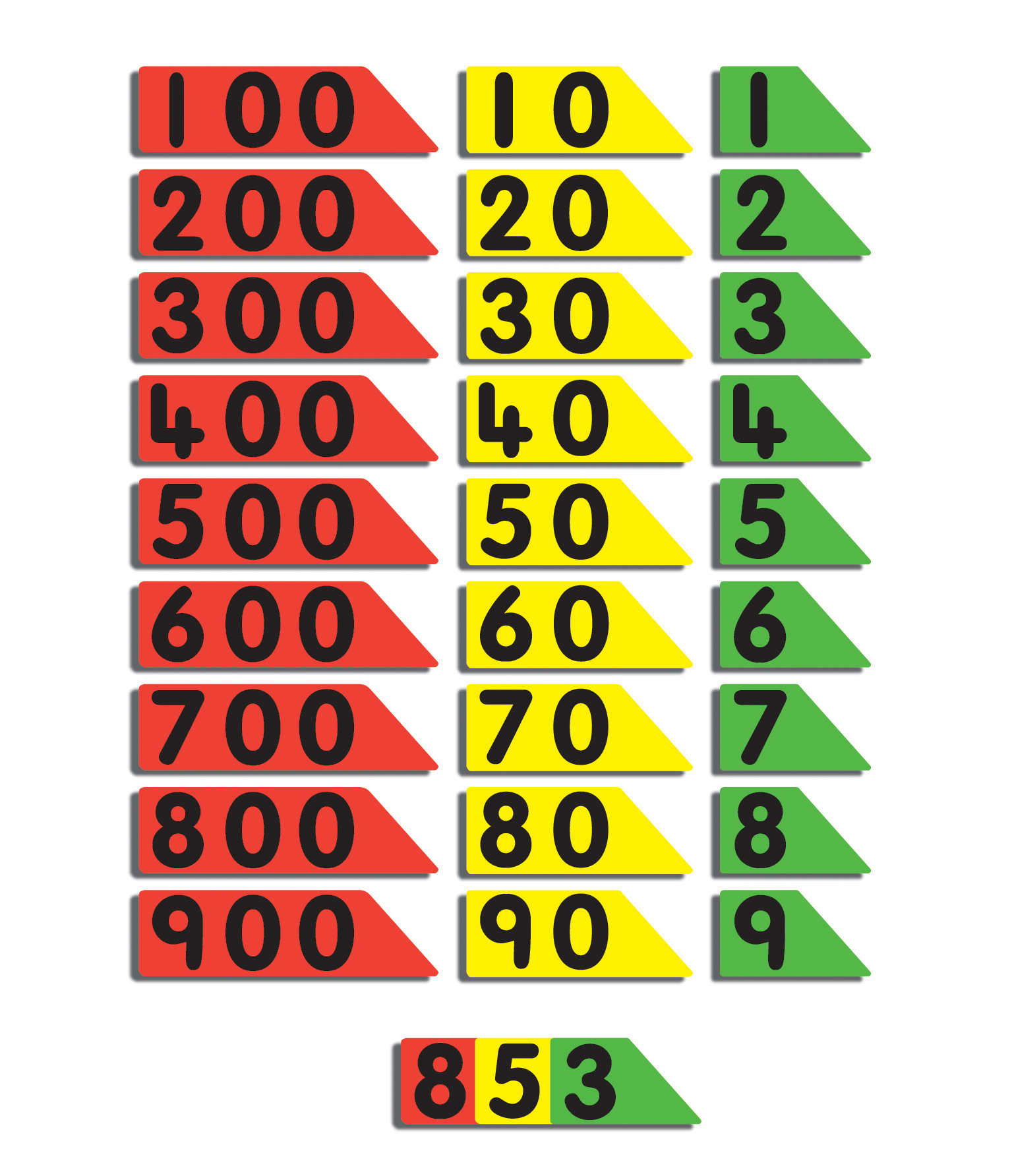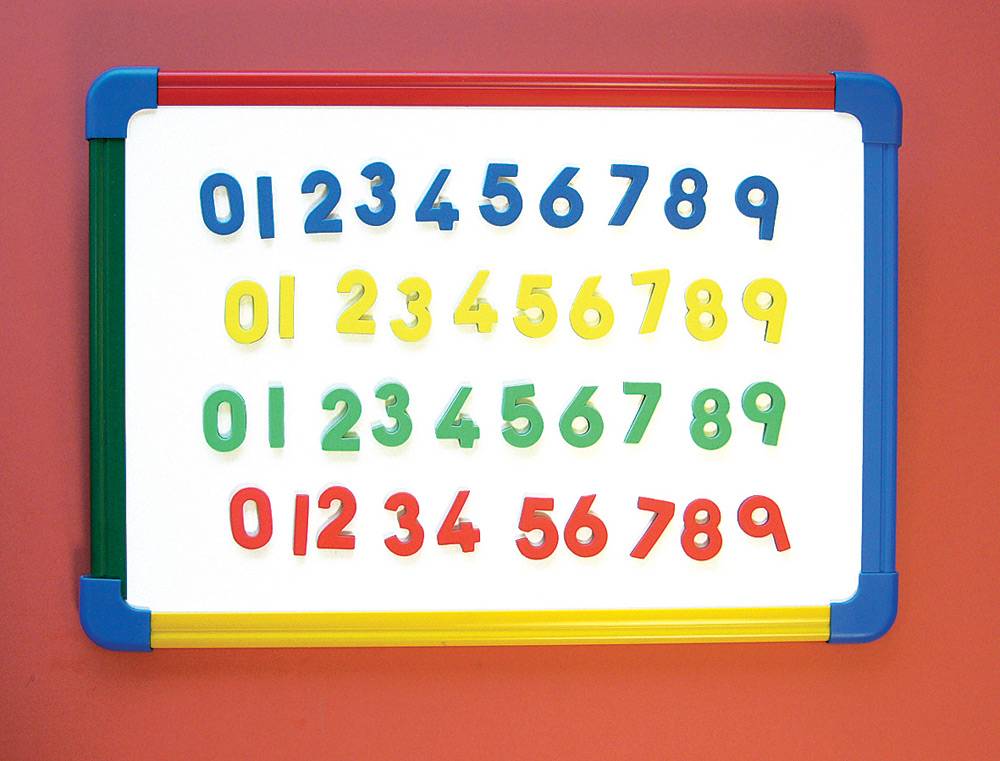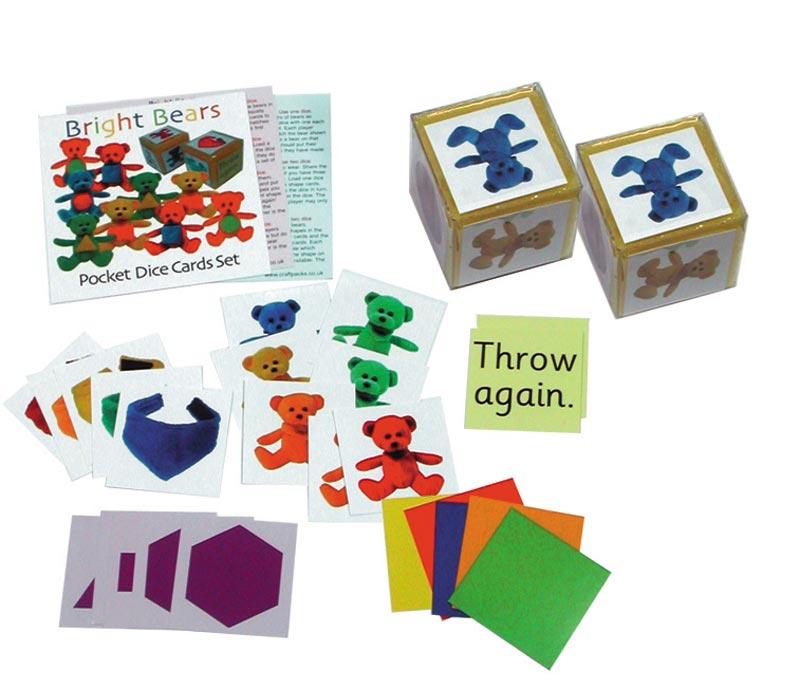£8.00 (+VAT)
When you play Number Rumbler, you’ll be having fun, practising your times tables, and developing number sense. Number Rumbler was developed with, by and for families – anyone from age 6 to adult can join in.
Number Rumbler consists of a pack of cards with numbers written – and drawn – in different ways. For example, 12 could be 4+4+4 or 3×4 or drawn out as twelve dots. Number Rumbler gives a better sense of how numbers relate to one another – and because of that understanding, you’ll be more flexible with numbers and more fluent when you’re calculating and estimating.
Fun family card game
Suitable for age six up – and adults enjoy it too!
Play gentle memory games or faster paced matching games
Supports maths learning and ‘number sense’
Develops understanding of multiplication and times tables
SKU:
Description
How to Play
You can play noisy or quiet games with Number Rumbler – it’s up to you. A great way to start is simply to sort the cards into families – all the 12s, all the 10s, and so on. You might also want to take out some of the cards if you’re playing with younger children – the blue division cards, and the green cards with words on.
Then you can get on to more advanced Number Rumbler games – you could use the cards to play Snap, or Pairs, or (many children’s preferred option!) make up your own game.
What people say
“[Number Rumbler] was really fun” – child’s comment
“I enjoyed it” – child’s comment
“Where can I buy this game?” – parent’s comment
“At last a number game for children to play with friends and family that really supports them to develop their number sense – and practice some important number facts along the way… There’s no better way to learn and practice those times tables!” Dr Alison Clark-Wilson, Research Fellow, UCL Institute of Education, and Trustee, Maths on Toast
Awards and endorsements
Finalist in the Science Toy Awards 2016
“This is a fun game for all the family which can be used in a number of different ways … The cards show quantities as calculations as well as dot arrays and this helps children to see relationships between the different representations and thus improve their number sense. A very simple but effective idea!” Margaret Haseler, Primary Lead Consultant, National Numeracy
